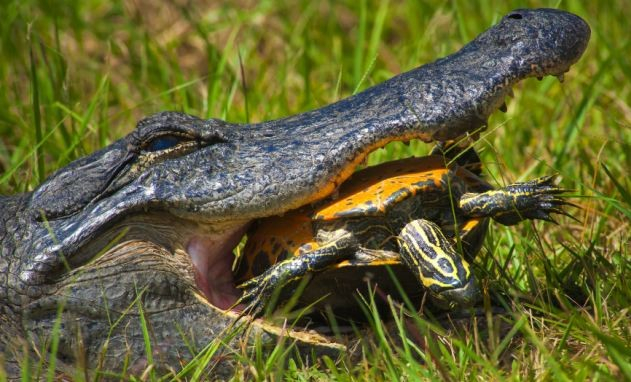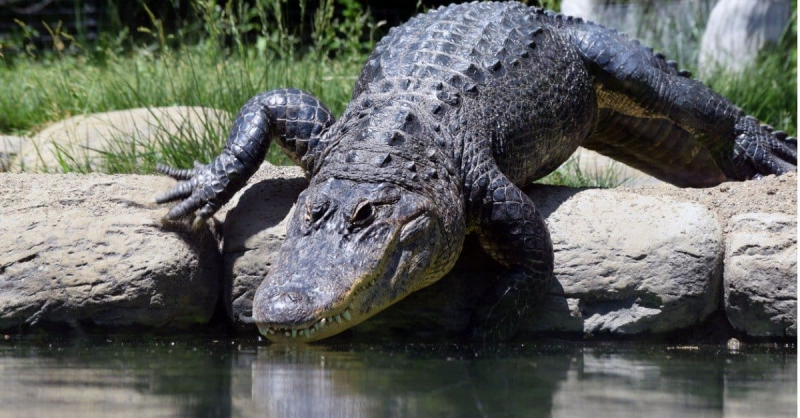Alligators
Another crocodilian reptile, alligators are typically smaller than crocodiles and have more rounded shorter snouts. There are only two species of alligators left in existence, and the American alligator is one of them.
Depending on their age, alligators have different diets. The adults prey on large fish like the Gar, other reptiles, birds, and animals like muskrats and coypus, while the younger alligators consume insects, worms, snails, crabs, and tiny fish species as food. Additionally, they eat turtles.
Alligators do sometimes eat turtles. They do not necessarily go for large turtles, just turtles that are smaller and can easily fit inside their mouth. Alligators do not usually attack turtles. The majority step into this situation when they are hungry and see an opportunity to catch an easy meal. Alligators mostly feed on aquatic turtles that live in freshwater ponds and swamps.
For many reasons, turtles make a good choice of prey. First of all, they have significant meals for the alligator thanks to their enormous, meaty bodies. Second, because they have weak defenses, turtles are easy prey. When an alligator gets close enough, turtles have no way of escape and no weapons with which to defend themselves. As a result, they are a fairly simple prey item for an alligator to catch and devour. Despite the fact that turtle shells are quite hard, they are not a defense against hungry alligators, who may easily crush a turtle in their jaws. A turtle's shell can be easily torn open by an alligator's teeth, which have the capacity to exert 300 pounds of force per square inch.










